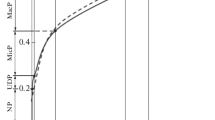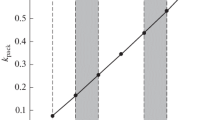Abstract
This work presents data on the construction of the dispersed structures of dispersion-filled polymer composite materials by the generalized (Θ, В, М) and reduced (Θ/В, Θ/Sf) parameters which take into account the main provision of the Prigogine–de Gennes theory on the formation of heterogeneity and functional division of a polymer matrix into three components: Θ—the fraction of the polymer phase-matrix (binding agent) for the formation of an interlayer among the filler particles; В—the fraction of the polymer phase-matrix (binding agent) for the filling of the volume among the particles with interlayers; and М—the fraction of the polymer phase-matrix (binding agent) in the boundary layers with a thickness δ. The main characteristics of the dispersed phase, as well as the division of the dispersed particles into groups with respect to size, namely, nanoparticles, ultradisperse particles, microparticles, macroparticles, and large particles, are presented. A classification of dispersion-filled polymer composite materials by the structural principle (diluted, low-filled, medium-filled, up to the yield strength, at the yield strength, high-filled, and ultrahigh-filled systems) and scheme of formation of various types of structures of dispersion-filled polymer composite materials is proposed. Formulae for the calculation of the generalized (Θ, B, M) and reduced (Θ/B, Θ/Sf) parameters, as well as the value of the parameter of maximum concentration of the dispersed filler φm for dispersed particles with various sizes and shapes (globe-shaped solid large particles, short hard fibers, gas-like particles, plastic particles) are presented. The concentration of the dispersed filler is calculated, which guarantees the formation of the set type of structure in dispersion-filled polymer composite materials. It is found that the process and operational properties are determined by the type and parameters of the heterogeneous heterophase structure of dispersion-filled polymer composite materials.

Similar content being viewed by others
REFERENCES
Raskutin, A.E., Strategy for the development of polymer composite materials, Aviats. Mater. Tekhnol., 2017.
Kolosova, A.S., et al., Modern polymer composite materials and their application, Mezhdunar. Zh. Prikl. Fundam. Issled., 2018, no. 5-1, pp. 245–256.
Lyukshin, B.A., et al., Dispersion-filled polymer composites for technical and medical purposes, 2017.
Kolosova, A.S., et al., Modern polymer composite materials and their application, Int. J. Appl. Basic Res., 2018, vol. 1, pp. 245–256.
Adaskin, A.M., Krasnovskii, A.N., and Tarasova, T.V., Science and technology of metallic, non-metallic, and composite materials, 2021.
Simonov-Emel’yanov, I.D. and Pykhtin, A.A., Densification curve of powdered fillers and calculation of the compositions of dispersion-filled polymer composites with different structures and properties, Materialovedenie, 2020, no. 6, pp. 37–44.
Pham, Q.D., Rheological properties of melts of dispersion-filled composite materials based on polyethylene containing glass microbeads, in Polymers in the Strategy of Scientific and Technological Development of the Russian Federation “Polymers-2020": A Collection of Abstracts of the Eighth All-Russian Kargin Conference, Moscow, November 9–13, 2020, Moscow: MESOL, 2020, p. 174.
Simonov-Emel’yanov, I.D., The structure and calculation of compositions of disperse-filled polymer adhesives and sealants in mass and volume units, Polym. Sci., Ser. D, 2020, vol. 13, no. 2, pp. 169–171.
Simonov-Emelyanov, I.D. and Kharlamova, K.I., Filler particle size and packaging and compositions of filled polymer composites with different types of structures and properties, Theor. Found. Chem. Eng., 2020, vol. 54, no. 6, pp. 1290–1296.
Nguen, Ch.N., San’yarova, M.V., and Simonov-Emel’yanov, I.D., Calculation of the compositions of dispersion-filled polymer composite materials with different structures, Tonkie Khim. Tekhnol., 2020, vol. 15, no. 1, pp. 62–66.
Shul’ga, A.V., Composites, Part 1: Fundamentals of Composite Materials Science, Moscow: NIYaU MIFI, 2013.
Krechetov, D.D. and Simonov-Emelianov, I.D., Structure, generalized parameters, and rheological properties of dispersion-filled thermoplastics, Inorg. Mater. Appl. Res., 2021, vol. 12, no. 4, pp. 889–896.
Author information
Authors and Affiliations
Corresponding author
Ethics declarations
The authors declare that they have no conflicts of interest.
Additional information
Translated by E. Boltukhina
Rights and permissions
About this article
Cite this article
Simonov-Yemel’yanov, I.D., Kharlamova, K.I. & Pykhtin, A.A. Creation of Filled Polymer Composite Materials with Different Types of Dispersed Structure and their Classification and Properties. Theor Found Chem Eng 56, 754–759 (2022). https://doi.org/10.1134/S0040579522050396
Received:
Revised:
Accepted:
Published:
Issue Date:
DOI: https://doi.org/10.1134/S0040579522050396




